Hot Pot
I like recipes that are less recipe and more method. I’ve adapted this from several different recipes I’ve found over the years, and while I still call it Hot Pot, it’s much more of moniker that is recognized in our household than something you’d find in a recipe. This method is nice because everything happens in one pot in about a half hour. It’s inexpensive and easily adaptable for various allergy or dietary requirements. Basically, you layer various ingredients based on how long they take to cook, add some liquid, and top with any greens to steam about 5 minutes before the end.
Hot pot in our house usually have the following components:
Protein: This is usually in the form of thinly sliced beef or lamb that we pick up from our local Asian grocer. It’s fairly inexpensive and we can typically get it in small quantities. Sometimes we skip the meat all together and introduce hard boiled quail eggs instead. Tofu is also an option – it really depends on what you like. Seafood is also a nice addition if that’s something you like.
“Hard” Vegetables: I define “hard” vegetables as vegetables that have, or can stand, a longer cooking time. We regularly purchase a variety of baby bok choy that can withstand a longer cooking time and benefits from being in direct contact with the cooking liquid. We also regularly use various types of daikon, turnip, and the tougher, green parts of leeks. This is also where we would put slices of ginger or garlic if we’re using them fresh. Other things that fit inside this category would be things like carrot, parsnip, lotus root, small radishes, Brussel sprouts etc. If you like onions, they can sometimes be in this category, but I would only use small, whole onions.
“Soft” Vegetables: These are things that are a bit more delicate or need a longer steam time. This is where I put things like long beans (also called cow peas), spinach stems, certain varieties of broccoli, or bamboo shoots. Other things that can be added are things like the tender portions of a leek, sliced onions, snap peas, and peppers.
“Steamables”: This is where I use the delicate greens. This is most often spinach leaves or the tops of the baby bok choy. This is also where I’ll toss in a bunch of watercress if we’re interested in cooking the watercress. This is completely optional, but I like this because it allows me to use all parts of a vegetable. I’ve absolutely tossed in radish leaves to steam. Pretty much any edible green is good to go.
Liquid: The absolute favourite in our house is a thick miso broth, but that is not the only option. Whatever liquid you choose should be used to add flavour though. You really don’t need a lot either. The vegetables provide a lot of additional liquid. The goal is to have enough to cover half to one inch of the base layer.
This method is super flexible. I made a super simple hot pot, so let’s jump in.
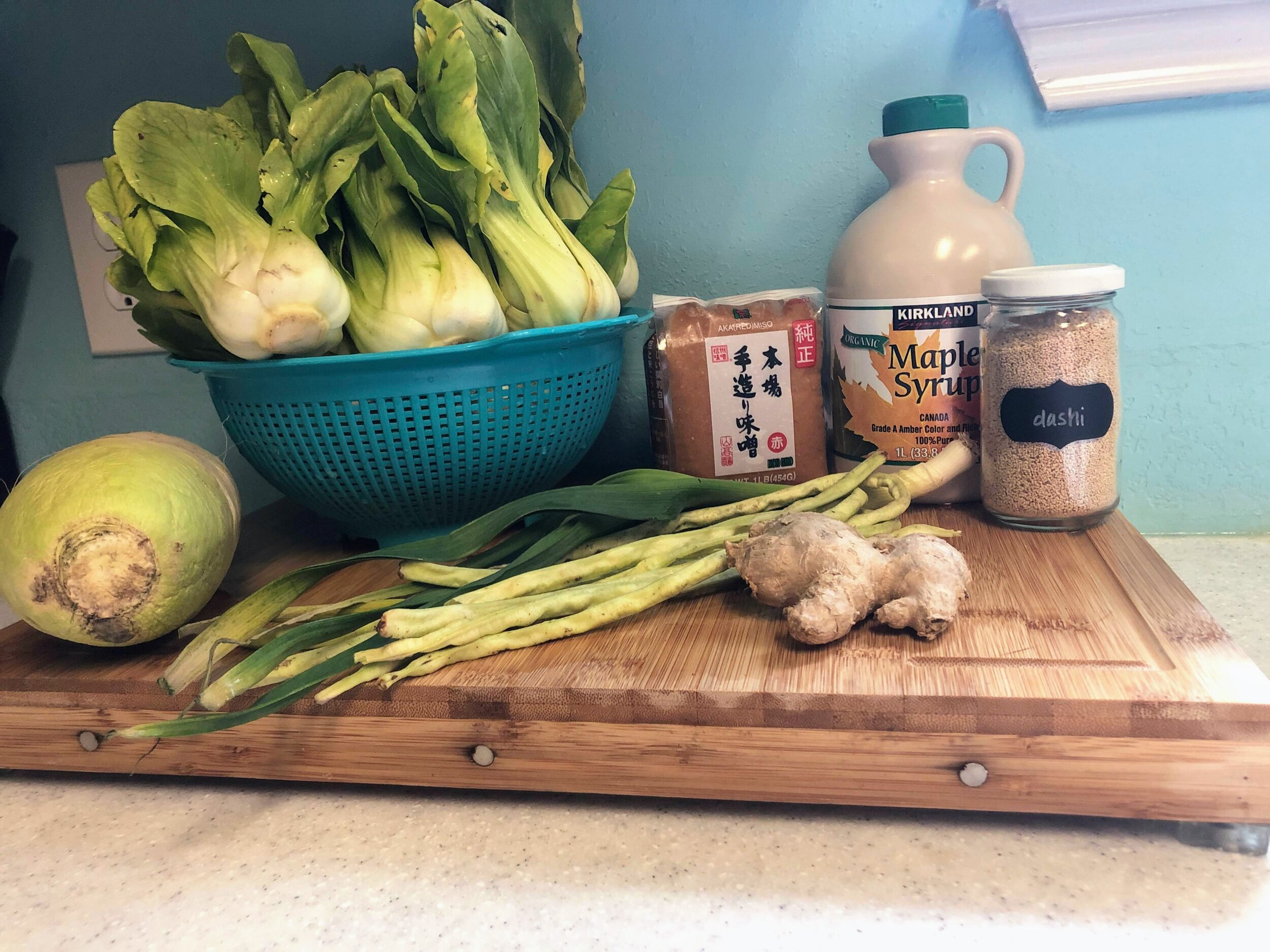
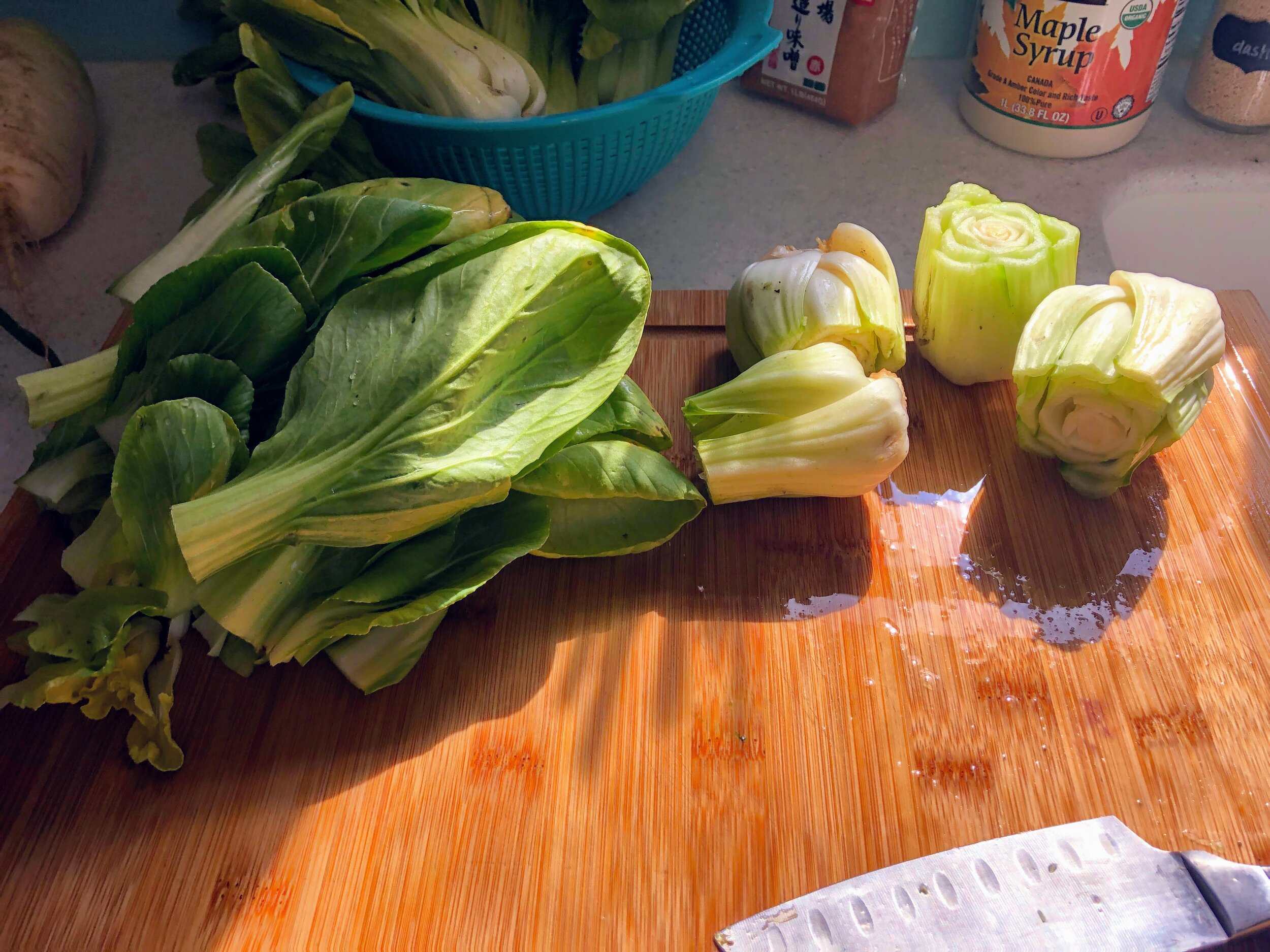
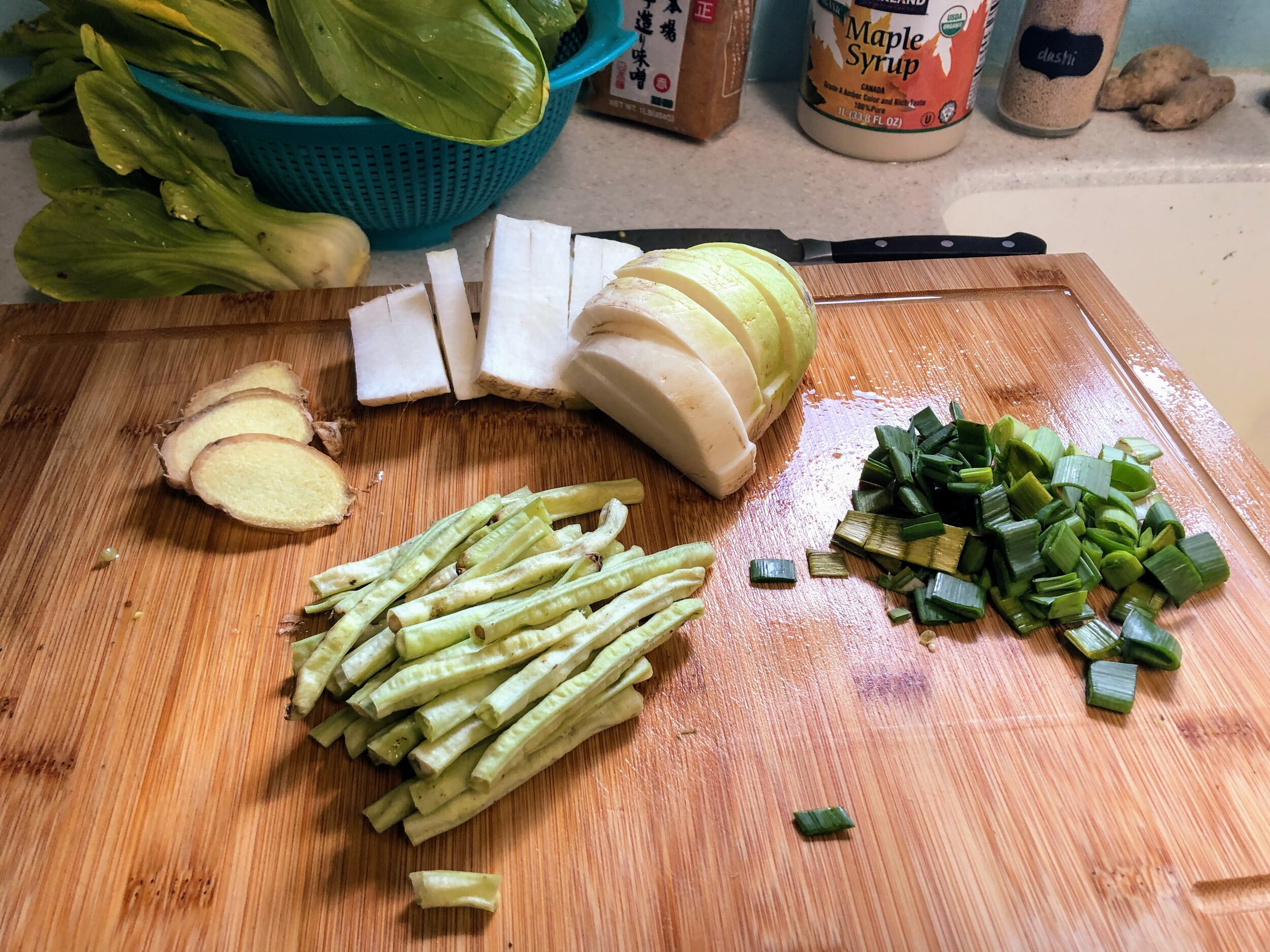
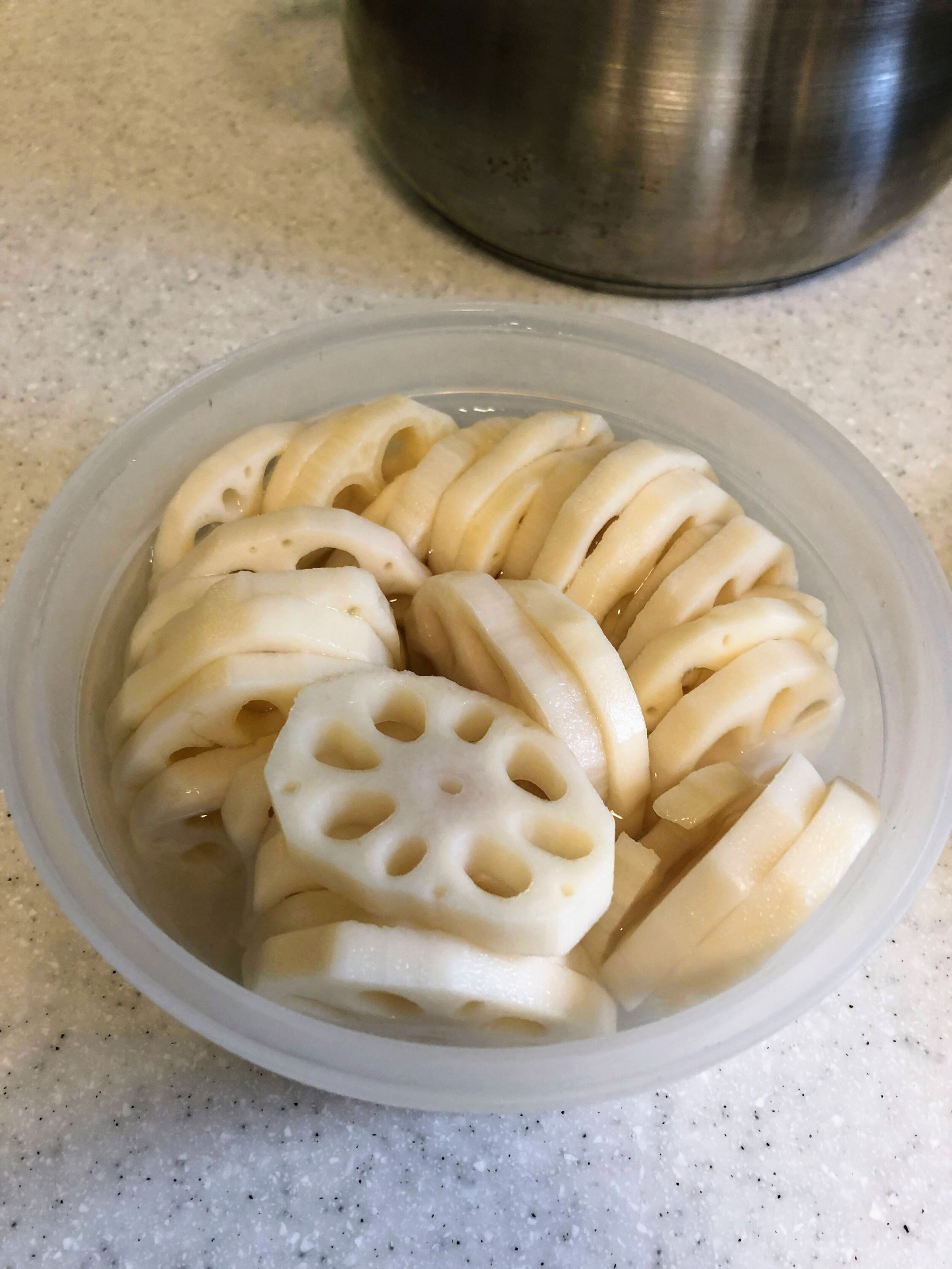

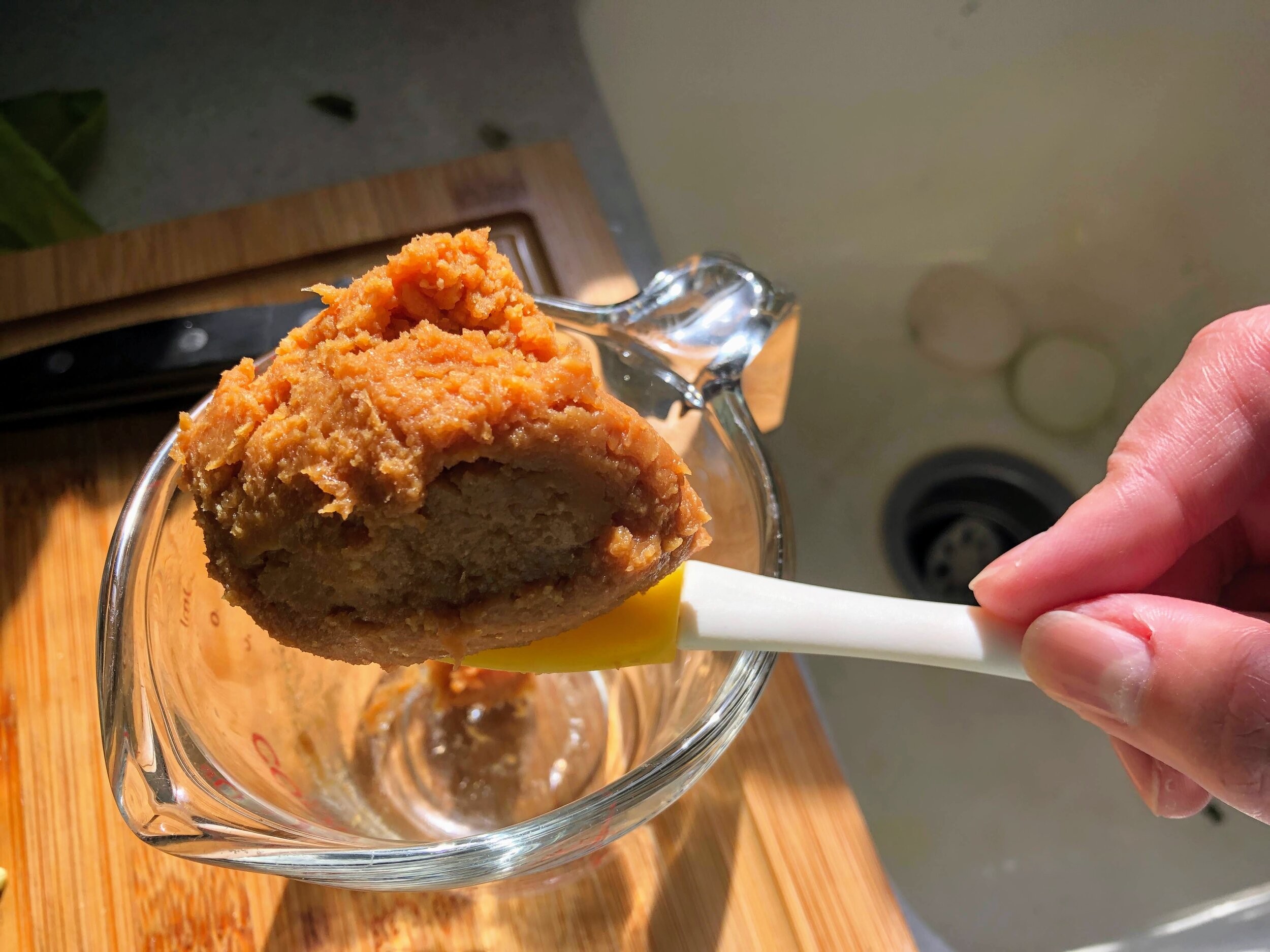
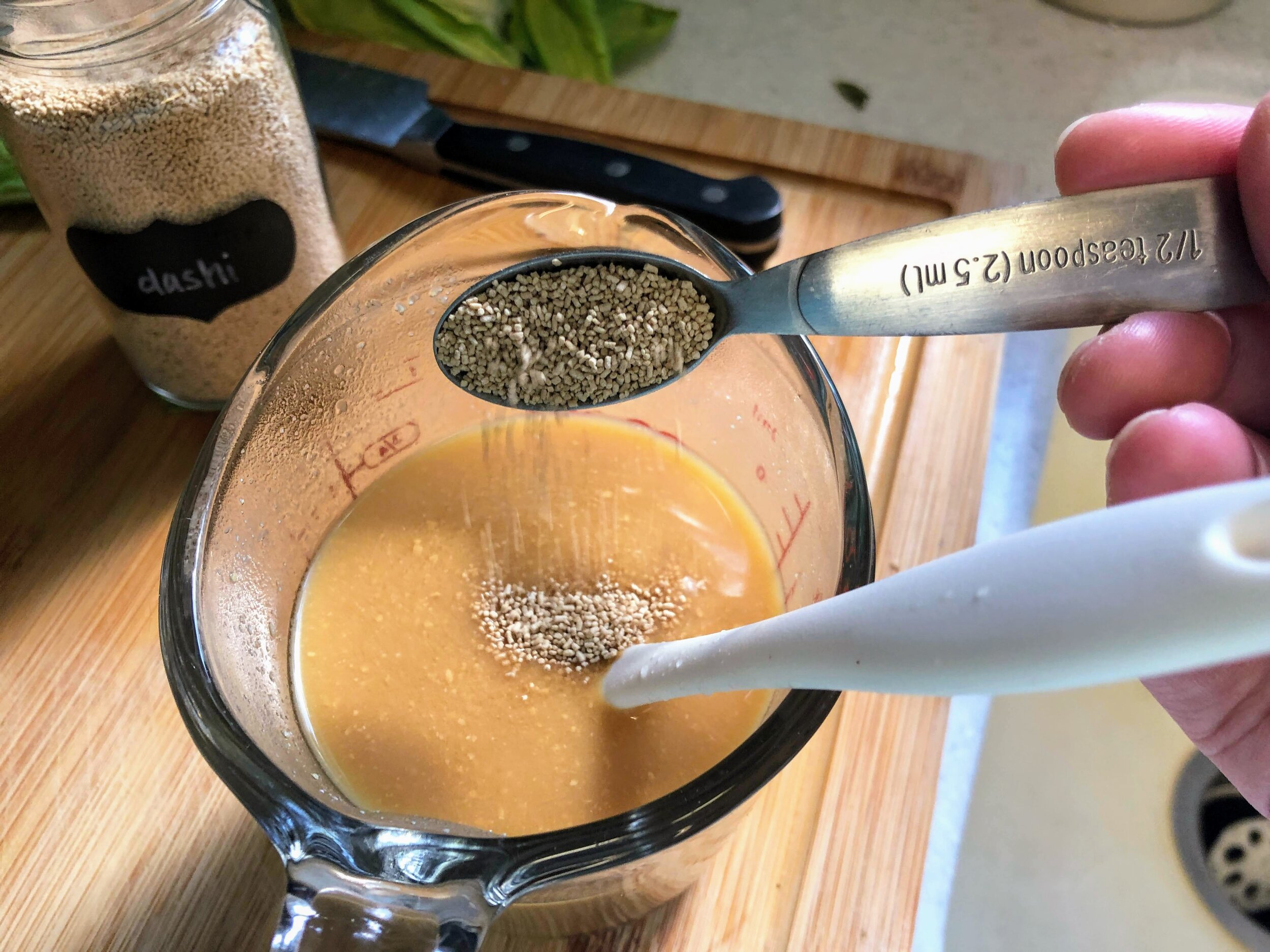
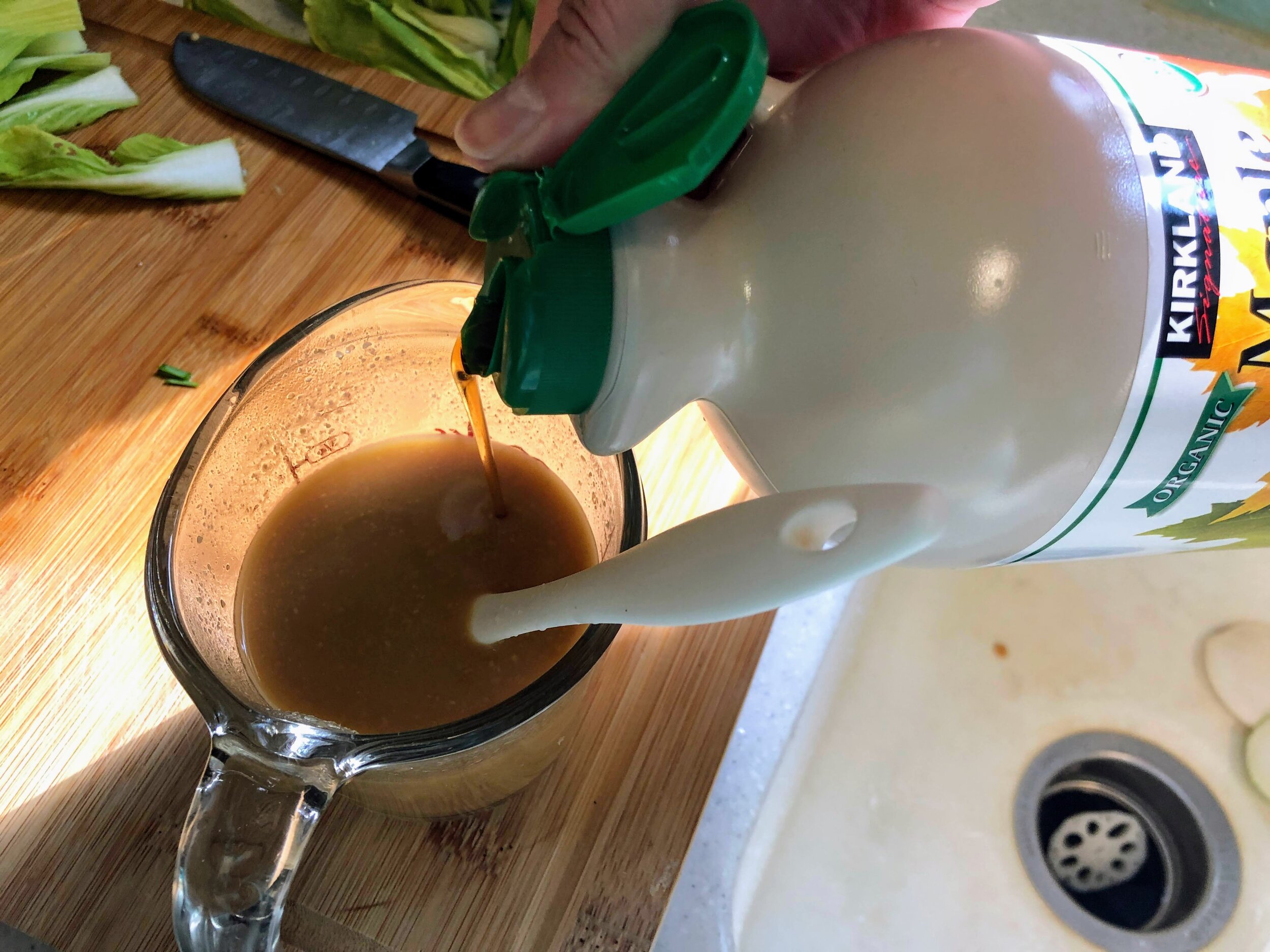
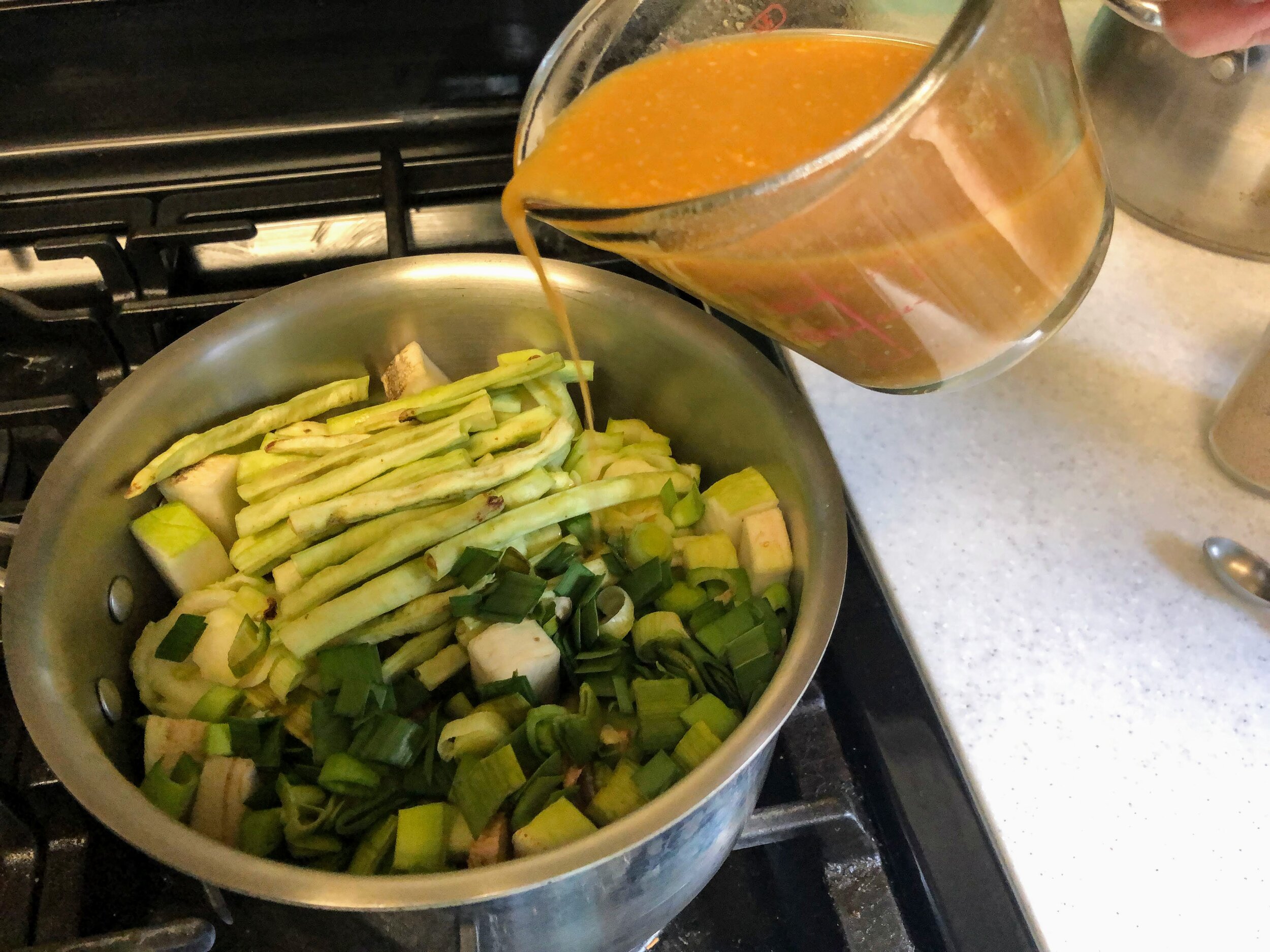
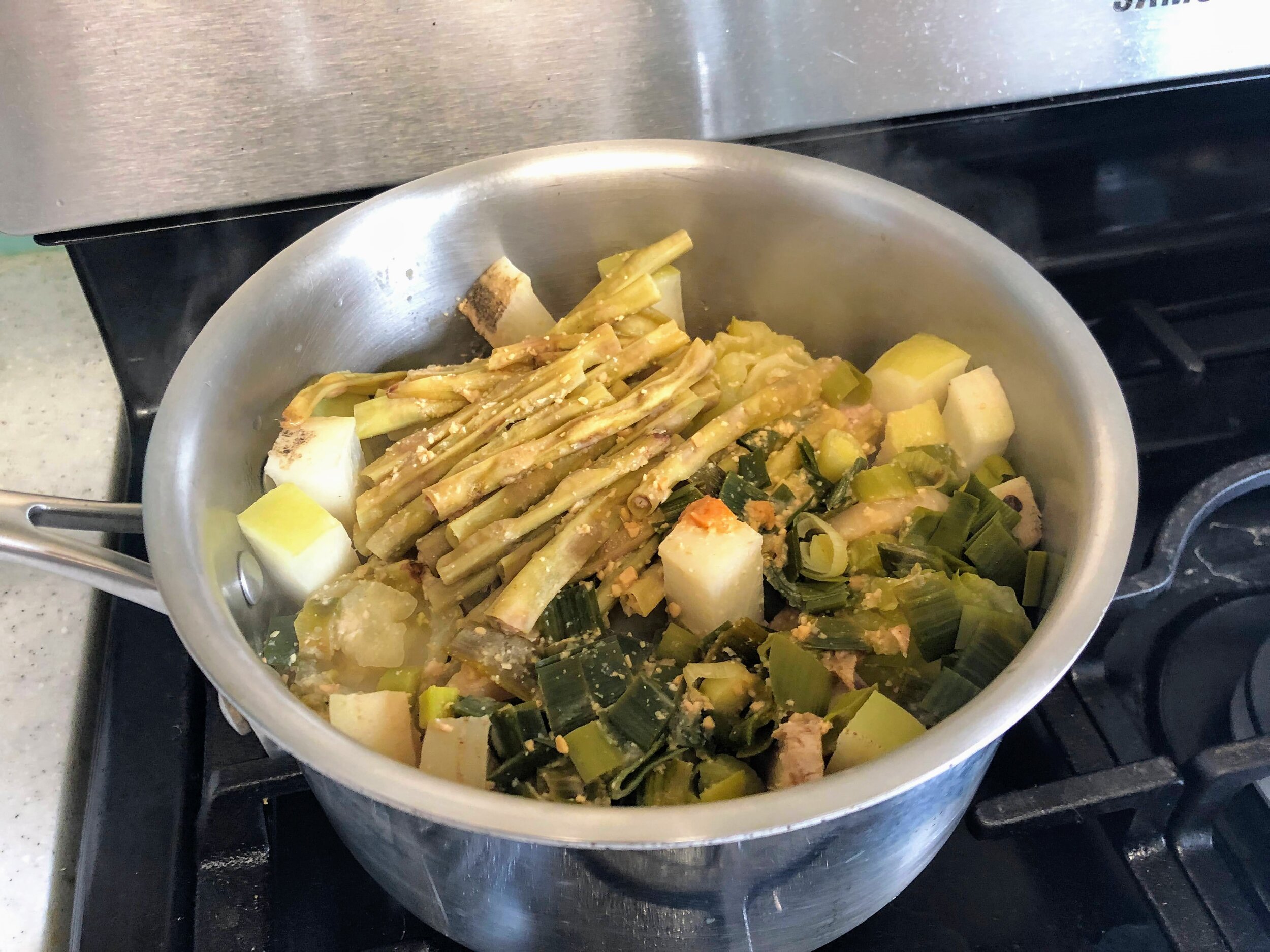
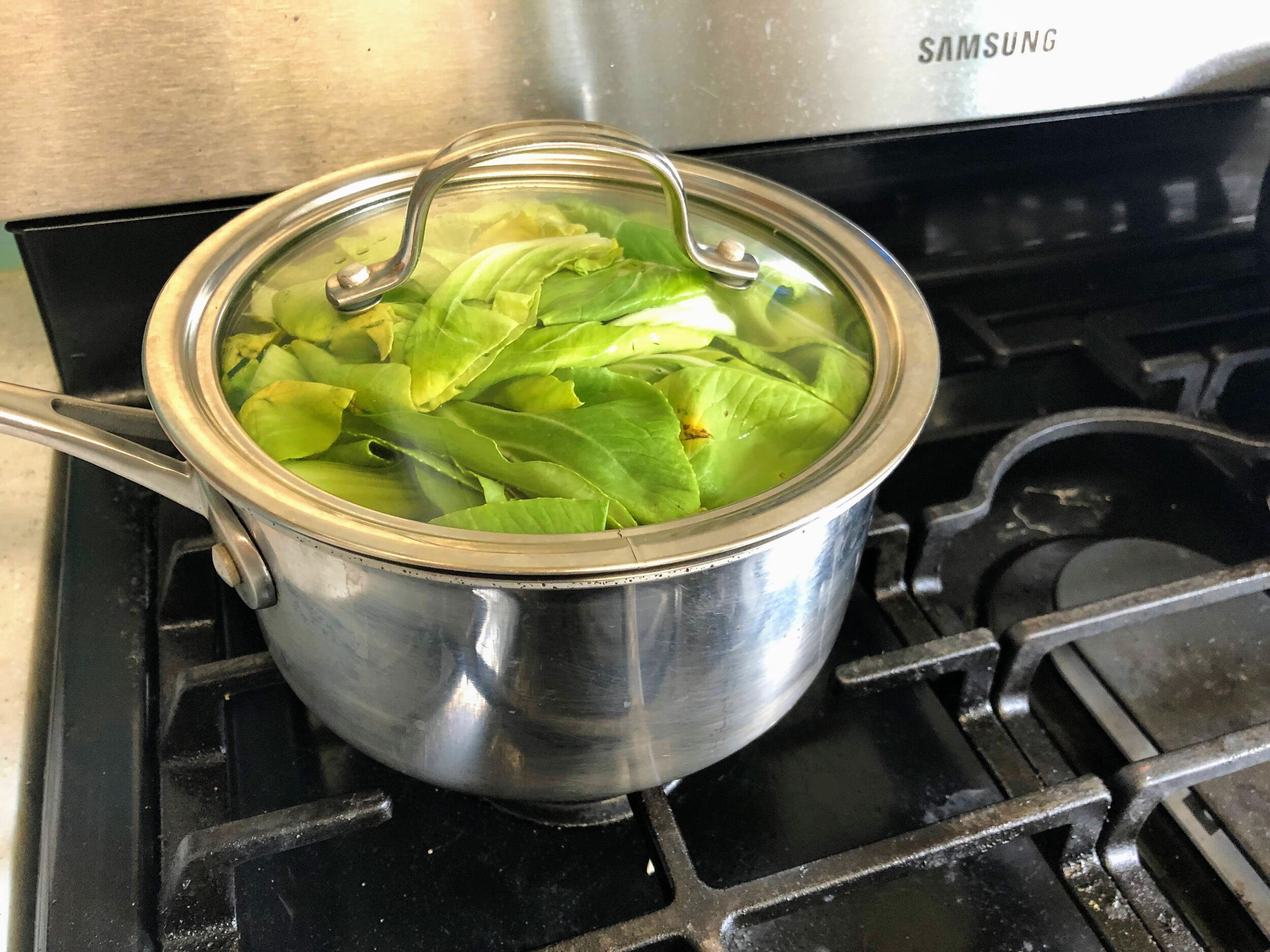
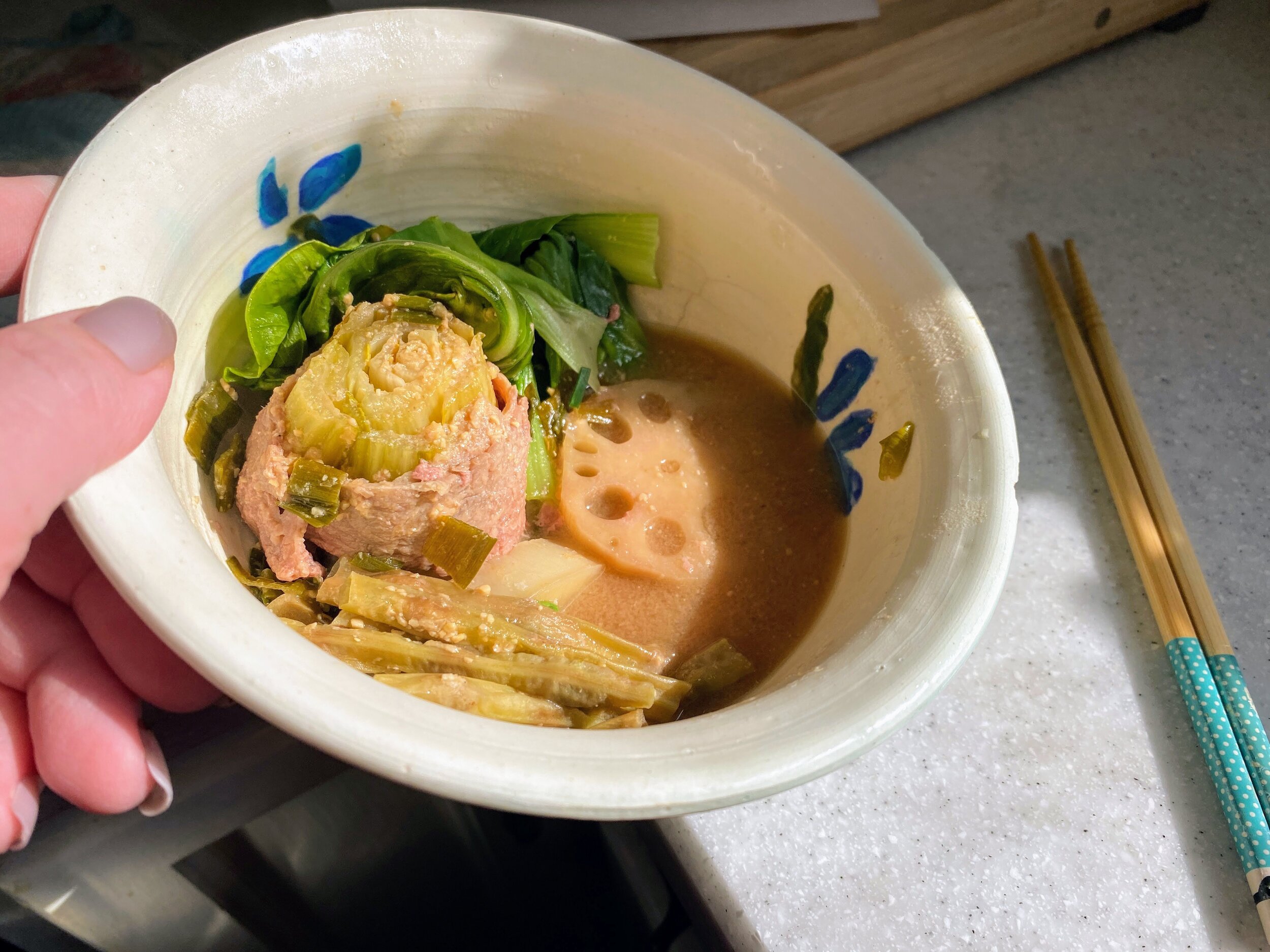
Hot Pot (Serves 2)
1/4 pound thinly sliced beef
4-6 Heads baby bok choy
1//2 small korean radish, sliced
4-6 pieces lotus root, sliced
1-inch piece of ginger, sliced
small bunch of garlic shoots
small bunch of cow peas
2 tablespoons miso paste (I used red miso)
1 teaspoon instant dashi powder
Maple syrup, to taste
Separate baby bok choy stems from leaves, and wrap with thin slices of beef. Place them in the bottom of a small pot and pack remaining space with radish slices, lotus root, and ginger. Be sure to pack it very tightly.
Prepare broth. Thin miso paste with 1/2-1 cup of warm water. Stir in dashi powder and maple syrup.
Place garlic shoots and cow peas on top of the other ingredients in the pot and pour broth over the top. Cover and cook on medium-low heat for 20-30 minutes.
Add bok choy leaves to top, cover, and steam for an additional five minutes.
Enjoy!
